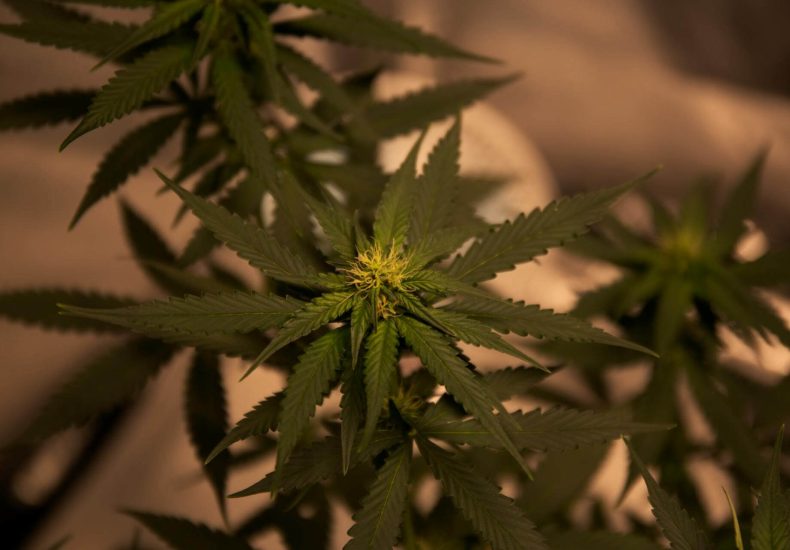 Cannabis
Cannabis
Table of Contents
Do you know anything about the Entourage Effect in cannabis? Marijuana, with its long and storied history of medicinal use, has recently become the subject of intense scientific scrutiny. Within its intricate chemical makeup lies a treasure trove of bioactive compounds that hold promise for therapeutic applications. At the forefront of cannabis research is the entourage effect—an intriguing phenomenon that underscores the synergistic interactions between cannabinoids, terpenes, and flavonoids.
Delving into the depths of the entourage effect reveals a complex interplay of compounds that collectively contribute to the plant’s therapeutic efficacy. Understanding the science behind this Entourage Effect in cannabis phenomenon is paramount to unlocking the full therapeutic potential of cannabis and revolutionizing medical treatments.

The Entourage Effect in Cannabis Demystified
Traditionally, the therapeutic effects of cannabis were attributed primarily to its two most well-known cannabinoids, THC (tetrahydrocannabinol) and CBD (cannabidiol). However, emerging evidence suggests that the therapeutic value of cannabis extends far beyond these two compounds alone.
The entourage effect in cannabis posits that the combined action of multiple cannabis compounds may produce more profound effects than any single compound in isolation. This phenomenon highlights the complex interplay between cannabinoids, terpenes, and flavonoids, each contributing to the overall therapeutic profile of cannabis.
Cannabinoids: Building Blocks of Therapeutic Action
Cannabinoids, the diverse class of chemical compounds found abundantly in cannabis, serve as the foundation of the entourage effect. While THC is renowned for its psychoactive properties, CBD has garnered attention for its potential therapeutic benefits, including analgesic, anti-inflammatory, and anxiolytic effects. However, the cannabis plant contains over a hundred other cannabinoids, each with its own unique pharmacological properties.
CBG (cannabigerol), for example, has shown promise as a neuroprotective agent and may possess anti-inflammatory properties. CBC (cannabichromene) has been studied for its potential antidepressant and analgesic effects. THCV (tetrahydrocannabivarin), another lesser-known cannabinoid, exhibits appetite-suppressant and anticonvulsant properties. When these cannabinoids interact synergistically, they may enhance therapeutic outcomes, providing a multifaceted approach to wellness. You need to know this when discovering the Entourage Effect in cannabis.
Terpenes: Aromatic Allies in Health Promotion
Terpenes, aromatic compounds abundant in cannabis, play a pivotal role in shaping the plant’s flavor and aroma profile. Beyond their sensory appeal, terpenes exhibit a diverse range of therapeutic properties and contribute significantly to the entourage effect. Myrcene, the most prevalent terpene in cannabis, is believed to enhance the sedative effects of THC, promoting relaxation and sleep.
Limonene, another prominent terpene, boasts anti-anxiety and antidepressant properties, offering mood-enhancing benefits alongside its citrusy aroma. Pinene, characterized by its pine-like scent, showcases anti-inflammatory and bronchodilator effects.

Moreover, terpenes may modulate the pharmacokinetics of cannabinoids, influencing their absorption, distribution, metabolism, and excretion in the body. By interacting with cannabinoid receptors and neurotransmitter systems, terpenes contribute to the overall therapeutic profile of cannabis and amplify the effects of cannabinoids—an essential aspect of the entourage effect in cannabis.
Flavonoids: Nature’s Healing Compounds
Flavonoids, a diverse group of phytochemicals found in cannabis and other plants, offer another layer of complexity to the entourage effect in cannabis. Cannflavin A, a flavonoid unique to cannabis, has shown potent anti-inflammatory properties, surpassing those of traditional nonsteroidal anti-inflammatory drugs (NSAIDs) like aspirin. Quercetin, another flavonoid abundant in cannabis, exhibits antioxidant, anti-cancer, and neuroprotective effects, further contributing to the plant’s therapeutic potential.
Like cannabinoids and terpenes, flavonoids interact synergistically with other compounds in cannabis, enhancing their bioavailability and efficacy. By modulating oxidative stress, inflammation, and cellular signaling pathways, flavonoids play a critical role in maintaining homeostasis within the body—a key aspect of the entourage effect.
Harnessing the Entourage Effect in Cannabis for Therapeutic Innovation
The entourage effect in cannabis holds immense promise for therapeutic innovation, paving the way for the development of novel cannabis-based treatments. By harnessing the synergistic interactions between cannabinoids, terpenes, and flavonoids, researchers can create targeted therapies for a wide range of medical conditions, including chronic pain, inflammation, epilepsy, and psychiatric disorders.
Furthermore, the entourage effect offers new opportunities for personalized medicine, allowing healthcare providers to tailor cannabis treatments to individual patient needs. By selecting specific cannabis strains rich in particular cannabinoids and terpenes, clinicians can optimize therapeutic outcomes while minimizing adverse effects—a crucial aspect of precision medicine.
Exploring the Entourage Effect in Clinical Research
As interest in cannabis-based medicine continues to grow, researchers are increasingly turning their attention to clinical studies to elucidate the mechanisms underlying the entourage effect in cannabis. These studies aim to evaluate the efficacy and safety of whole-plant cannabis extracts compared to isolated cannabinoids in treating various medical conditions.
Preliminary findings from clinical trials have shown promising results, suggesting that whole-plant cannabis extracts may offer superior therapeutic outcomes compared to isolated cannabinoids. For example, a study published in the Journal of Pain and Symptom Management found that cancer patients experienced greater pain relief and improved quality of life when using whole-plant cannabis extracts containing THC, CBD, and other cannabinoids, compared to synthetic THC alone.
More clinical research is needed…
Moreover, clinical research has shed light on the importance of dosage and formulation in optimizing the entourage effect. By carefully titrating the ratios of cannabinoids, terpenes, and flavonoids in cannabis extracts, researchers can tailor treatment regimens to target specific symptoms and patient populations.
As clinical research into the entourage effect in cannabis continues to evolve, it holds the potential to revolutionize medical practice and provide patients with more effective and personalized treatment options. By harnessing the synergistic interactions between cannabis compounds, clinicians can unlock the full therapeutic potential of this remarkable plant and improve the lives of countless individuals worldwide.
Final Thoughts on the Entourage Effect in Cannabis
The entourage effect in cannabis represents a fundamental principle in cannabis pharmacology, highlighting the intricate synergy between its various compounds. By unraveling the science behind this phenomenon, researchers can unlock the full therapeutic potential of cannabis and transform medical treatments.
Moving forward, continued exploration of the entourage effect will drive innovation in cannabis research, leading to the development of more effective and personalized therapies for patients worldwide. It’s an interesting subject that every cannabis smoker should know about.


